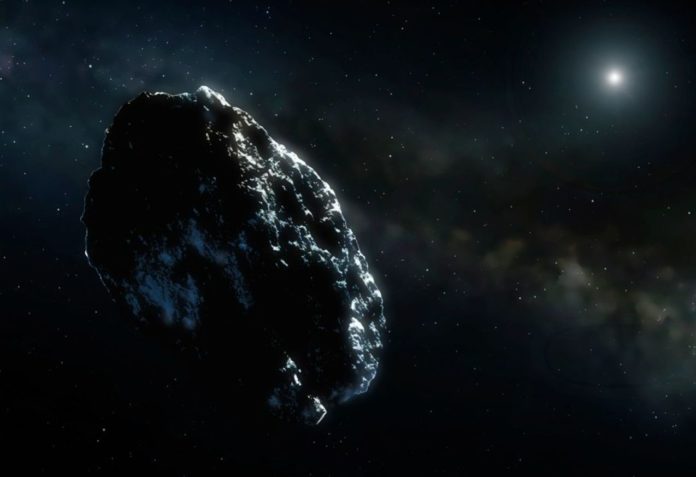Avoiding asteroid collisions has been a major topic in public media for decades – particularly since the release of Deep Impact and Armageddon. However, is a nuclear explosion the best method of disposing of possibly hazardous space rocks? Definitely not.
The scientific community has been working on a much more effective (and safer) way to ditch such collisions with the help of a gravity tractor.
And Dr. Yohannes Ketema’s flight pattern has made this simplest of all asteroid defense mechanism much more effective.
Gravity tractors have existed for some time. They leverage the artificial body’s gravity to attract the object, slightly altering its trajectory. This would gradually move the dangerous object out of its current trajectory and into a safer one.
Additionally, it avoids any direct impact or explosion on the asteroid’s surface. Given that many asteroids are “rubble piles,” such direct kinetic impactors or nuclear explosions would, at most, shatter some of the object’s bigger components, but would, at worst, create a pluralitymultiple of chaotic trajectory objects capable of impacting the Earth at even greater speeds.
Gravity tractors are available in four setups to avoid such outcomes. The stationary version parks a rather hefty probe alongside an object and gradually drags it in a new direction. In a halo orbit, the probe circles the object slowly in a manner meant to drive it in a certain direction. While the first two options would employ conventional chemical rockets to reach their objectives, a gravity tractor equipped with a solar sail may gradually manoeuvre into position to allow the probe to nudge the object out of the way. Finally, a constellation of probes could engage together to reroute an object.
Dr. Ketema’s research suggests utilizing a modified version of a stationary and halo orbit. The new orbit is known as “restricted Keplerian motion,” and it entails moving a probe back and forth on a specified side of the asteroid in order to compel it as far as possible in a specific direction. Dr. Ketema first proposed this method in a paper in 2017 and has just released a new one that improves the orbit by reducing the weight required in the probe.
To do this, he used mathematical optimization. In optimization problems, there are some goals and limitations.
In this case, there was one goal (moving the asteroid out of a dangerous orbit) and three limitations: 1) Not directly touching the asteroid, 2) Not hitting the asteroid with thrusters, 3) Have enough time for the gravity tractor to do its work. Best estimates for that third limitation seem to be around ten years. Such long time horizons show the importance of early detection in asteroid defense tactics.
That time factor is also important because of how long it would take a gravity tractor to reach it. Because the weight of the probe is an important aspect in its effectiveness, the more fuel that burns up with it (i.e., if the probe had to reach in place quickly), the less effective it will be at deflecting the asteroid.
Dr. Ketema put his optimization technique to the test, the doctor simulated his new gravity tractor on an existing asteroid – 2007 VK184. While it will pass close to Earth, this asteroid will not strike it. Calculations reveal that by placing a gravity tractor next to it approximately ten years out, it may be shifted into a safer orbit.
Even with this realistic simulation, there are a few bugs to iron out. First, gravity tractors do not perform well on larger items since their effectiveness is totally dependent on how massive they are in comparison to the object they are attempting to move. Fortunately, most larger asteroids in dangerous orbits are already being extensively monitored and do not appear to be heading for Earth anytime soon. A further specific issue with the paper’s modelling is that asteroids do not have a spherical gravitational field, making it more difficult to calculate the ideal orbit to deflect them onto a safer route.
Any asteroid that could pose such a threat, on the other hand, would be thoroughly investigated. And any probe would almost certainly have a gravitometer to examine the object’s gravitational field in real time and alter its orbit accordingly. However, any benefit humans would gain from this possibly extremely deadly threat is well worth the work spent developing it.
Source: arXiv – A Mass-optimized Gravity Tractor for Asteroid Deflection
Image Credit: Getty
You were reading: Can a spacecraft moving back and forth help prevent Asteroid impact?
